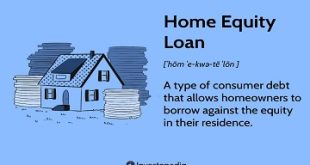Introduction
Mortgage rates and trends play a significant role in the housing market, influencing affordability, buying power, and refinancing decisions for homeowners. In this comprehensive guide, we’ll delve into everything you need to know about mortgage rates and trends, including how they’re determined, factors that impact them, and strategies for navigating the market effectively.
Chapter 1: Understanding Mortgage Rates
Mortgage rates refer to the interest charged on a home loan, and they fluctuate based on various factors:
Market Conditions:
Mortgage rates are influenced by broader economic factors such as inflation, economic growth, and monetary policy set by the Federal Reserve.
Credit Score:
Borrowers’ credit scores play a significant role in determining the interest rates they qualify for, with higher credit scores typically leading to lower rates.
Loan Term:
The duration of the loan also affects mortgage rates, with shorter-term loans generally offering lower rates compared to longer-term loans.
Chapter 2: Factors Affecting Mortgage Rates
Several factors impact mortgage rates and contribute to their fluctuation:
Economic Indicators:
Key economic indicators such as Gross Domestic Product (GDP), unemployment rates, and inflation levels influence market expectations and, consequently, mortgage rates.
Federal Reserve Policy:
The Federal Reserve’s decisions on interest rates and monetary policy have a direct impact on mortgage rates, as they affect the cost of borrowing for banks and lenders.
Global Events:
Global economic events, geopolitical tensions, and financial market volatility can also impact mortgage rates, as investors seek safe-haven assets like U.S. Treasury bonds.
Chapter 3: Types of Mortgage Rates
There are different types of mortgage rates available to borrowers:
Fixed-Rate Mortgages:
Fixed-rate mortgages have a stable interest rate for the entire loan term, providing predictability and consistency in monthly payments.
Adjustable-Rate Mortgages (ARMs):
ARMs have an initial fixed-rate period, followed by a period where the interest rate adjusts periodically based on market conditions.
Hybrid ARMs:
Hybrid ARMs combine elements of fixed-rate and adjustable-rate mortgages, typically offering a fixed rate for a certain period before converting to an adjustable rate.
Chapter 4: Mortgage Rate Trends
Understanding mortgage rate trends is essential for homebuyers and homeowners:
Historical Trends:
Analyzing historical mortgage rate data can provide insights into long-term trends and help borrowers anticipate future rate movements.
Current Market Conditions:
Monitoring current economic indicators, Federal Reserve announcements, and global events can help predict short-term fluctuations in mortgage rates.
Forecasting:
While predicting future mortgage rates is challenging, financial experts and analysts use various models and indicators to make informed projections.
Chapter 5: Strategies for Navigating Mortgage Rates
Homebuyers and homeowners can employ several strategies to navigate mortgage rate fluctuations effectively:
Locking in Rates:
When rates are favorable, borrowers can consider locking in their mortgage rates to secure them for a set period, protecting against potential rate increases.
Monitoring Market Conditions:
Keeping a close eye on economic indicators and market trends can help borrowers time their mortgage applications to take advantage of low rates.
Improving Credit Scores:
Borrowers can work on improving their credit scores to qualify for lower interest rates, potentially saving thousands of dollars over the life of the loan.
Exploring Refinancing Options:
Homeowners can refinance their existing mortgages to take advantage of lower rates or switch to a different type of mortgage that better suits their financial goals.
Chapter 6: Conclusion
Mortgage rates and trends are crucial factors in the homebuying and refinancing process, impacting affordability, loan terms, and overall financial well-being. By understanding how mortgage rates are determined, monitoring market conditions, and employing smart strategies, borrowers can make informed decisions to secure the best possible mortgage rates for their needs. Whether you’re buying your first home, refinancing an existing mortgage, or investing in real estate, staying informed about mortgage rates and trends is key to achieving your homeownership goals.




